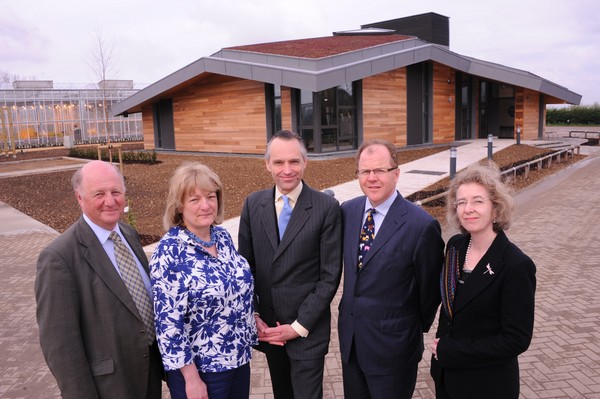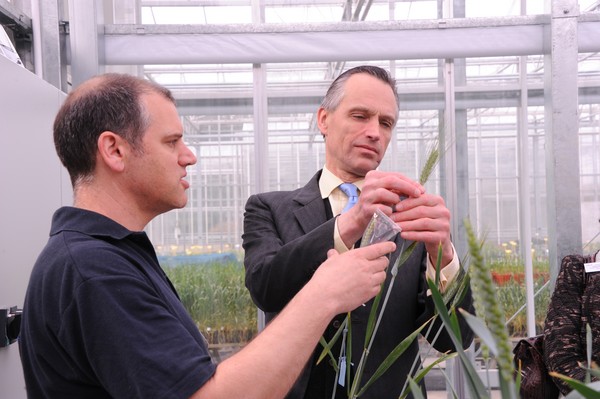- About
-
Research
- Agronomy and farming systems
-
Agricultural crop research
-
Research projects - agriculture
- About SASSA-SAI
- BioBoost
- Biomass Connect
- CTP for Sustainable Agricultural Innovation
- Climate Ready Beans - workshop presentations (March 2022)
- Crop diversity HPC cluster
- Designing Future Wheat
- Final project workshop
- Get involved
- List of materials
- News and updates
- Partners
- Rustwatch
- The Sentinel Crop Disease Surveillance Network
- The research team
- UK Cereal Pathogen Virulence Survey
- UK wheat varieties pedigree
- Weed management - IWM Praise
- Crop breeding
- Crop characterisation
- Data sciences
- Genetics and pre-breeding
- Plant biotechnology
- Plant pathology and entomology
- Resources
-
Research projects - agriculture
-
Horticultural crop research
-
Research projects - horticulture
- Augmented Berry Vision
- BEESPOKE
- Boosting brassica nutrition in smart growing systems
- CTP for Fruit Crop Research
- Develop user-friendly nutrient demand models
- Egg laying deterrents for spotted wing drosophila
- Enhancing the nutritional quality of tomatoes
- Improving berry harvest forecasts and productivity
- Improving vineyard soil health through groundcover management
- Intelligent growing systems
- Knowledge transfer for sustainable water use
- POME: Precision Orchard Management for Environment
- RASCAL
- STOP-SPOT
- UV-Robot
- Crop science and production systems
- Genetics, genomics and breeding
- Pest and pathogen ecology
- Field vegetables and salad crops
- Plum Demonstration Centre
- The WET Centre
- Viticulture and Oenology
-
Research projects - horticulture
- Crop Science Centre
- Research Projects
- Research Publications
-
Services
- Analytical Services
- Business Development
- Commercial trial services
- Membership
- Plant breeding
- Plant characterisation
- Seed certification
-
Training
-
Technical agronomy training
- Advanced crop management of bulb onions
- Advanced crop management of vegetable brassicas
- Advanced nutrient management for combinable crops
- Benefits of cover crops in arable systems
- Best practice agronomy for cereals and oilseed rape
- Developing a Successful Strategy for Spring Crops
- Disease Management and Control in Cereal Crops
- Incorporating SFI options into your rotation
- Protected Environment Horticulture – Best Practice
- Techniques for better pest management in combinable crops
- Crop inspector and seed certification
- Licensed seed sampling
-
Technical agronomy training
- News & Views
- Events
-
Knowledge Hub
- Alternative and break crops
-
Crop genetics
- POSTER: Diversity enriched wheat (2025)
- POSTER: Genetics of wheat flag leaf size (2024)
- POSTER: Wheat yield stability (2024)
- Poster: Traits for future cereal crops (2022)
- POSTER: wild wheat fragment lines (2022)
- POSTER: Improving phenotyping in crop research (2022)
- PRESENTATION: Plant breeding for regen ag
- Poster: Designing Future Wheat (2020)
- Crop nutrition
-
Crop protection
- POSTER: Understanding the hierarchy of black-grass control (2025)
- POSTER: Emerging weed threats (2025)
- POSTER: Disease control in barley (2025)
- Poster: Weed seed predation in regen-ag (2024)
- POSTER: Disease control in winter wheat (2025)
- POSTER: Mode of action (2023)
- POSTER: Inter-row cultivation for black-grass control (2022)
- POSTER: UKCPVS winter wheat yellow rust in spring 2025 (2025)
- Poster: Management of Italian ryegrass (2021)
- POSTER: UKCPVS winter wheat rusts - 2024/25 review (2025)
- POSTER: UKCPVS disease monitoring and the benefit to UK growers (2025)
- POSTER: Diagnosing and scoring crop disease using AI (2025)
- POSTER: Finding new sources of Septoria resistance (2024)
- POSTER: Fungicide resistance research (2024)
- POSTER: Detecting air-borne pathogens (2024)
- POSTER: Oilseed rape diseases (2024)
- POSTER: Fungicide resistance research (2024)
- POSTER: Improving chocolate spot resistance (2022)
- Poster: Pathogen diagnostics (2022)
- Fruit
- Regen-ag & sustainability
-
Seed certification
- POSTER: Wheat DUS (2024)
- POSTER: Innovation in variety testing (2024)
- POSTER: AI and molecular markers for soft fruit (2024)
- POSTER: Barley crop identification (2023)
- POSTER: Herbage grass crop identification (2023)
- POSTER: Herbage legume crop identification (2024)
- POSTER: Minor cereal crop inspecting (2023)
- POSTER: Pulse crop identification (2023)
- POSTER: Wheat crop identification (2023)
-
Soils and farming systems
- POSTER: Checking soil health - across space and time (2024)
- POSTER: Checking soil health - step by step (2024)
- POSTERS: Changing soil management practices (2022)
- Poster: Monitoring natural enemies & pollinators (2021)
- POSTER: Soil structure and organic matter (2024)
- POSTER: Novel wheat genotypes for regen-ag (2024)
- Video: New Farming Systems project (2021)
- Video: Saxmundham Experimental Site (2021)
- POSTER: Impact of prolonged rainfall on soil structure (2024)
- POSTER: Soil & agronomic monitoring study (2024)
- POSTER: The impact of rotations & cultivations (2024)
- VIDEO: Great Soils; soil sampling guidelines (2020)
- Poster: Soil invertebrates within arable rotations (2024)
- VIDEO: Soil health assessment (2021)
- POSTER: Saxmundham - modern P management learnings
- POSTER: Saxmundham - 125 years of phosphorus management
- Poster: Soil phosphorus - availability, uptake and management (2025)
- POSTER: Morley long term experiments (2025)
- POSTER: Exploiting novel wheat genotypes for regen-ag (2025)
- Video: Saxmundham Experimental Site (2021)
- Varieties
NEWS: Defra Minister opens NIAB Innovation Farm visitor centre and glasshouse facilities
NIAB, Cambridge - A new £2.16m visitor centre and glasshouse facilities to showcase advances in plant genetics have been officially opened by Defra Science Minister Lord de Mauley.

The new Sophi Taylor Building and glasshouse will be the main venue for NIAB Innovation Farm, a pioneering knowledge transfer initiative established by NIAB to support the translation of plant science discoveries into practical application by linking the science base and industry. It also provides business assistance for SMEs in the eastern region.
Accompanied by Government Life Sciences Adviser George Freeman MP and NIAB Board member Sir Jim Paice MP, Lord de Mauley toured the NIAB facilities and viewed some of the innovative plant science research taking place at the Institute. The new centre is in former Defra minister Sir Jim Paice’s South East Cambridgeshire constituency.
Addressing more than 100 representatives of the agricultural and plant science indus tries at the opening event, Lord de Mauley paid tribute to NIAB’s commitment to applied and translational science, which he said would be vital in helping agriculture to expand, invest and gear up for the challenges highlighted in the Government’s forthcoming AgriTech strategy.
tries at the opening event, Lord de Mauley paid tribute to NIAB’s commitment to applied and translational science, which he said would be vital in helping agriculture to expand, invest and gear up for the challenges highlighted in the Government’s forthcoming AgriTech strategy.
Lord de Mauley, who is Parliamentary Under Secretary of State for Resource Management, the Local Environment and Environmental Science, said:
“In Government we are working to improve the competitiveness and resilience of UK agriculture through innovation, and by encouraging more farmers to use groundbreaking new technologies.
“NIAB is recognised worldwide for independence, innovation and integrity in agriculture and food. NIAB Innovation Farm, and these new facilities, builds on NIAB’s research excellence in plant genetics, plant varieties, and seeds.
The Minister also described how Defra is working with the Department for Business, Innovation and Skills to develop a new Agri-Tech Strategy for the UK. The Strategy aims to unlock the economic potential of the UK’s agri-science base by boosting the production efficiency UK agricultur e, accelerating the translation of research into practical applications, and improving access to advice to the farming community on best practice and new technology.
e, accelerating the translation of research into practical applications, and improving access to advice to the farming community on best practice and new technology.
“We are very pleased to have Dr Tina Barsby, Chief Executive of NIAB, as a member of our newly formed Leadership Council to tackle the challenges of our AgriTech Strategy. Tina is helping us shape the strategy and deliver our vision for a competitive and sustainable UK farming and food sector,” said Lord de Mauley.
Welcoming the Minister’s comments, Dr Barsby said:
“The strategic changes NIAB has implemented over the past five years, building on our core skills in variety evaluation and seed testing, are increasingly recognised in their own right as world-class capabilities extending along the length of the crop improvement pipeline, from plant genetics and pre-breeding to applied agronomy research and knowledge transfer onto farm.
“The stunning new Sophi Taylor Building is a physical expression of our commitment to supporting the transfer of plant science into practice, and it is extremely encouraging to hear the Minister acknowledge directly the pivotal role NIAB has to play in shaping and delivering the objectives of the Government’s forthcoming Agri-Tech Strategy,” finished Dr Barsby.
Ends
The Sophi Taylor Building
Funding for the construction of the new visitor centre comes from the European Regional Development Fund (ERDF) and the NIAB Trust, and places NIAB Innovation Farm’s field, glasshouse demonstrations and visitor venue all in one easily accessible location at NIAB’s Park Farm site near Histon.
The new building will be the central venue for NIAB and NIAB Innovation Farm’s programme of exhibitions, lectures, seminars and workshops, catering for up to 100 people. It includes meeting and office spaces, and a show-garden that doubles as a meeting area and opportunity to display new plant varieties and species.
With a roof covered by living plants and photo-voltaic cells, rainwater harvesting, automatic ventilation, biomass boiler and a zero carbon construction, the Sophi Taylor Building has some of the most outstanding green building credentials in the UK. It is one of only 15 construction projects in the UK in the final stage of achieving an Outstanding BREEAM category, in recognition of the building’s environmental credentials in construction and management. Only 52 buildings have so far achieved BRE’s Outstanding category. Developed by the Building Research Establishment the BRE Energy Assessment Methodology (BREEAM) is the world’s leading building environmental assessment method.
Sophi Taylor
Sophi Taylor was an Oxfordshire farmer's widow who left a significant legacy to NIAB after her death in 2010. A partner in the mixed arable farm business with her husband Henry, Mrs Taylor had a lifelong interest in plant breeding research and technology so it was agreed that naming the new facility after her would be a fitting tribute to her memory.





